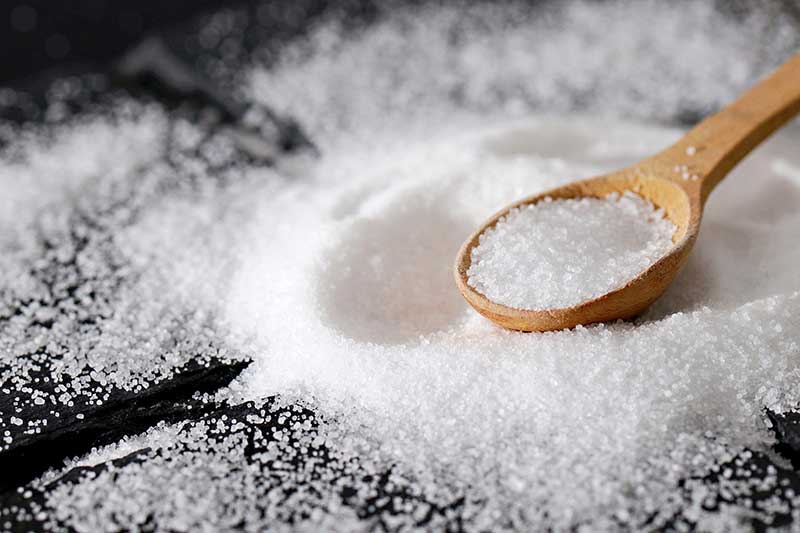Sodium is an essential mineral that plays a vital role in various bodily functions. Low sodium levels in the body, also known as sodium deficiency or hyponatremia, can cause serious health complications, particularly in females. Recognizing the signs and symptoms of low sodium levels in women is crucial for timely diagnosis and treatment.
In this section, we will explore the key details of sodium deficiency symptoms in females. We will discuss what sodium deficiency is, its causes, and the potential risks related to it. Furthermore, we will delve into the physical and mental indicators of sodium deficiency in women, the effects of low sodium levels, and the diagnostic and treatment options available for this condition.
Key Takeaways
- Sodium deficiency or hyponatremia is a serious health condition that can lead to severe complications in females.
- Recognizing the signs and symptoms of low sodium levels in women is crucial for timely diagnosis and treatment.
- In this section, we will explore the causes, potential risks, physical, and mental indicators, effects, diagnostic, and treatment options for sodium deficiency in females.
What is Sodium Deficiency?
Sodium deficiency, also known as hyponatremia, is a condition where there is an inadequate amount of sodium in the body fluids outside of the cells. Sodium is an essential electrolyte that helps regulate fluid balance in the body, and low levels can have serious health consequences.
There are various causes of sodium deficiency, including excessive sweating, certain medications, hormonal imbalances, and underlying health conditions such as kidney disease and congestive heart failure. Additionally, women may be at higher risk of developing sodium deficiency due to factors such as hormonal fluctuations and pregnancy.
Recognizing the signs of sodium deficiency in females is crucial for early intervention and preventing further complications. Let’s take a closer look at the common signs and symptoms of low sodium levels in women.
Common Symptoms of Sodium Deficiency in Females
Sodium deficiency, or hyponatremia, can cause a range of physical and mental symptoms in women. Here are some of the most commonly experienced signs of low sodium levels in females:
- Fatigue: Feeling tired or weak, even after adequate rest.
- Muscle cramps: Painful muscle contractions, especially in the legs and feet.
- Nausea and vomiting: Feeling sick to the stomach and throwing up.
- Headache: A dull or pounding pain in the head.
- Dizziness: Feeling lightheaded or fainting, especially upon standing up.
- Confusion: Difficulty thinking clearly or remembering things.
- Seizures: Uncontrolled movements of the body, loss of consciousness, and other symptoms.
Women who experience any of these symptoms should seek medical attention promptly. Sodium deficiency can lead to serious complications if left untreated.

Effects of Sodium Deficiency in Females
Sodium, an essential electrolyte, plays a crucial role in regulating bodily fluids, supporting nerve and muscle function, and maintaining proper blood pressure levels. When the body lacks sufficient sodium, it can lead to a condition known as hyponatremia, also called sodium deficiency.
Low sodium levels in females can have significant effects on the body, affecting various systems and bodily functions. Some common effects of sodium deficiency in females include:
| System | Effects |
|---|---|
| Nervous System | Confusion, seizures, lethargy, headache |
| Cardiovascular System | Heart palpitations, low blood pressure, arrhythmias |
| Muscular System | Muscle cramps, weakness, spasms |
| Cognitive Function | Fatigue, inability to concentrate, memory impairment |
Low sodium levels in females can also lead to more severe complications, such as brain swelling and coma, if left untreated. Therefore, it is crucial to seek medical attention if you experience any sodium deficiency symptoms or suspect that you may have low sodium levels.
Effects of Sodium Deficiency in Females: Understanding the Risks
It is important to understand the potential risks associated with low sodium levels in women. Women who are pregnant, breastfeeding, or who have certain health conditions such as kidney disease are at a higher risk of developing sodium deficiency.
In addition, women who engage in intense physical activity or endurance sports, such as marathon running or triathlons, may be at risk of developing hyponatremia due to excessive sweating and sodium loss.
Recognizing the signs and symptoms of sodium deficiency in females is critical for early detection and proper treatment. If you suspect you may have low sodium levels, consult with a healthcare professional to receive a proper diagnosis and personalized treatment plan.
Diagnosing Sodium Deficiency in Females
If you are experiencing sodium deficiency symptoms in females, it is essential to consult with a healthcare professional for proper evaluation and guidance. Diagnosis of low sodium levels in women typically involves a medical evaluation, laboratory tests, and other methods used by healthcare professionals to diagnose the condition.
During a medical evaluation, your healthcare provider will ask you about your symptoms and medical history. They may also perform a physical examination to check for signs of sodium deficiency. Laboratory tests, such as a blood test, will be used to measure your sodium levels and detect any abnormalities.
Other methods used to diagnose sodium deficiency in females include a urine test to determine the amount of sodium in your urine, and imaging tests, such as an MRI or CT scan, to check for any underlying medical conditions that may be causing low sodium levels.
Timely diagnosis of sodium deficiency is crucial for effective treatment and management of the condition. If you are experiencing low sodium symptoms in women, don’t hesitate to seek medical attention.
Treating Sodium Deficiency in Females
Once a diagnosis of sodium deficiency has been made by a healthcare professional, there are a variety of treatment options available for females. Treatment aims to restore proper sodium levels in the body and manage any underlying conditions contributing to low sodium levels.
Dietary Changes: In mild cases, dietary changes may be sufficient to increase sodium levels in females. Increasing salt intake through dietary changes or supplementation is often recommended. Foods rich in sodium such as soups, canned vegetables, and processed meats can also be included in the diet.
Medication: In more severe cases, medication may be necessary to correct sodium levels. Medications such as diuretics, which increase urine output, may be reduced or discontinued. Other medications that can help increase sodium levels include vasopressin receptor antagonists and hypertonic saline.
Lifestyle Modifications: Making lifestyle modifications can also help females with sodium deficiency. This can include reducing fluid intake to prevent dilution of sodium in the body, avoiding excessive exercise, and managing any underlying health conditions such as heart or kidney disease.
It is important to follow medical advice for effective treatment and management of sodium deficiency in females. Treatment will depend on the severity of the condition, underlying causes, and individual health needs. Monitoring sodium intake and levels is also important to prevent recurrence of sodium deficiency in the future.
Conclusion
Recognizing the signs and symptoms of sodium deficiency in females is crucial for maintaining optimal health. As we have discussed, low sodium levels can cause a range of physical and mental effects, impacting various bodily systems. It is essential to consult with a healthcare professional if you suspect sodium deficiency, as timely diagnosis and appropriate treatment can lead to improved well-being and prevent further complications.
Remember to pay attention to your body and recognize any unusual symptoms you may experience. Eating a balanced diet, staying hydrated, and staying active can also help promote healthy sodium levels. If you have any concerns or questions about sodium deficiency, do not hesitate to reach out to a medical professional for guidance and support.
FAQ
Q: What are the signs of sodium deficiency in females?
A: Common signs of sodium deficiency in females include fatigue, muscle cramps, dizziness, confusion, and more. It is important to recognize these symptoms for timely diagnosis and treatment.
Q: What causes sodium deficiency in women?
A: Sodium deficiency in women can be caused by various factors, including excessive sweating, certain medications, hormonal imbalances, and underlying health conditions. Understanding the potential causes is crucial for prevention and management.
Q: How is sodium deficiency diagnosed in females?
A: Sodium deficiency in females is diagnosed through medical evaluations, including blood tests to measure sodium levels. Healthcare professionals may also consider the individual’s symptoms and medical history for accurate diagnosis.
Q: What are the potential effects of sodium deficiency on female health?
A: Sodium deficiency can have various effects on female health, including impacts on the nervous system, cardiovascular system, and muscular system. Maintaining proper sodium levels is important for optimal bodily function.
Q: How is sodium deficiency treated in females?
A: Treatment for sodium deficiency in females may involve dietary changes to increase sodium intake, medication to regulate sodium levels, and lifestyle modifications to prevent further complications. Following medical advice is important for effective treatment.
Q: Why is it important to recognize sodium deficiency symptoms in females?
A: Recognizing sodium deficiency symptoms in females is important for timely diagnosis and treatment. Addressing low sodium levels can help improve overall well-being and prevent potential complications.














Got a Questions?
Find us on Socials or Contact us and we’ll get back to you as soon as possible.